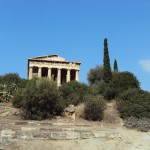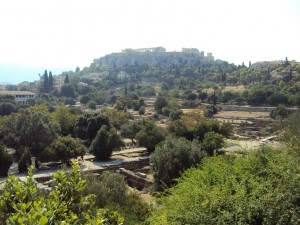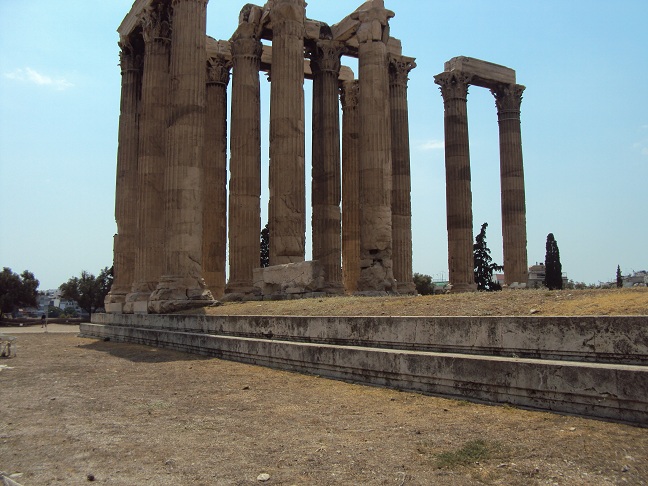The first things we noticed about Athens were the unmistakable signs of a police state. Cops everywhere, in gear more appropriate to an invading army, sometimes toting machine guns. Parked near the University, and around Syntagma Square, were the riot wagons — sinister armoured buses full of gas masks (clearly visible through the slit windows) and god knows what dissent-crushing tools. On a back street, we found a home-made monument to a sixteen-year-old shot by the cops. The city is dirty and run down. The Metro is closed “for repairs”, but actually for a strike. Most people look like they’re grudgingly marking time rather than planning for the future. I saw more ragged people, addicts openly plunging needles into their flesh, and desperate-looking young men than I’ve seen in any European city. Filip, in an earlier search of the channels, could not find any television news, and the local papers did not seem to cover international affairs. The National Museum of Archaeology, supposed to be a major cultural feature, is closed for the weekend and apparently on reduced hours the rest of the time.
But we made for some to the sites that interested me. The Parthanon, of course, but I was more keen to see the buildings in the Agora, especially the Stoa of Attalos. This last was no disappointment. Back in the 1950s, this structure was painstakingly restored by the American School of Classical Studies, and it contains a museum showing artifacts from every stage in the city’s history up to the Byzantine. There were many democracy-related objects that delighted me. Too bad the idea doesn’t hold much sway in the town today.
The Temple of Hephaestus is better preserved than the Parthenon, and, since you can get much closer to it, gives the visitor a better idea of what a Greek temple was like in antiquity. The Temple of Olympian Zeus, built under the tyrant Hippias and Hipparchos, is only fragmentary, but quite has quite spectacular columns. It is mentioned in Aristotle’s Politics as an example of megalomaniac public works used by tyrants to distract the people from rebellion. When democracy was restored in 510 BC, construction ceased for more than 300 years. It was completed in Hellenistic times, by a Roman architect. We also visited the Museum of Cycladic Art, which contained many exquisite objects that I had before only seen described in words, or poorly photographed.
We ended the day’s exploration on one of the few hills that held no monuments, but offered a splendid view or the Acropolis and most of the city. Hot and tired and thirsty, we made our way to the docks of Piraeus, and I’m typing the entry on the ferry.



0 Comments.